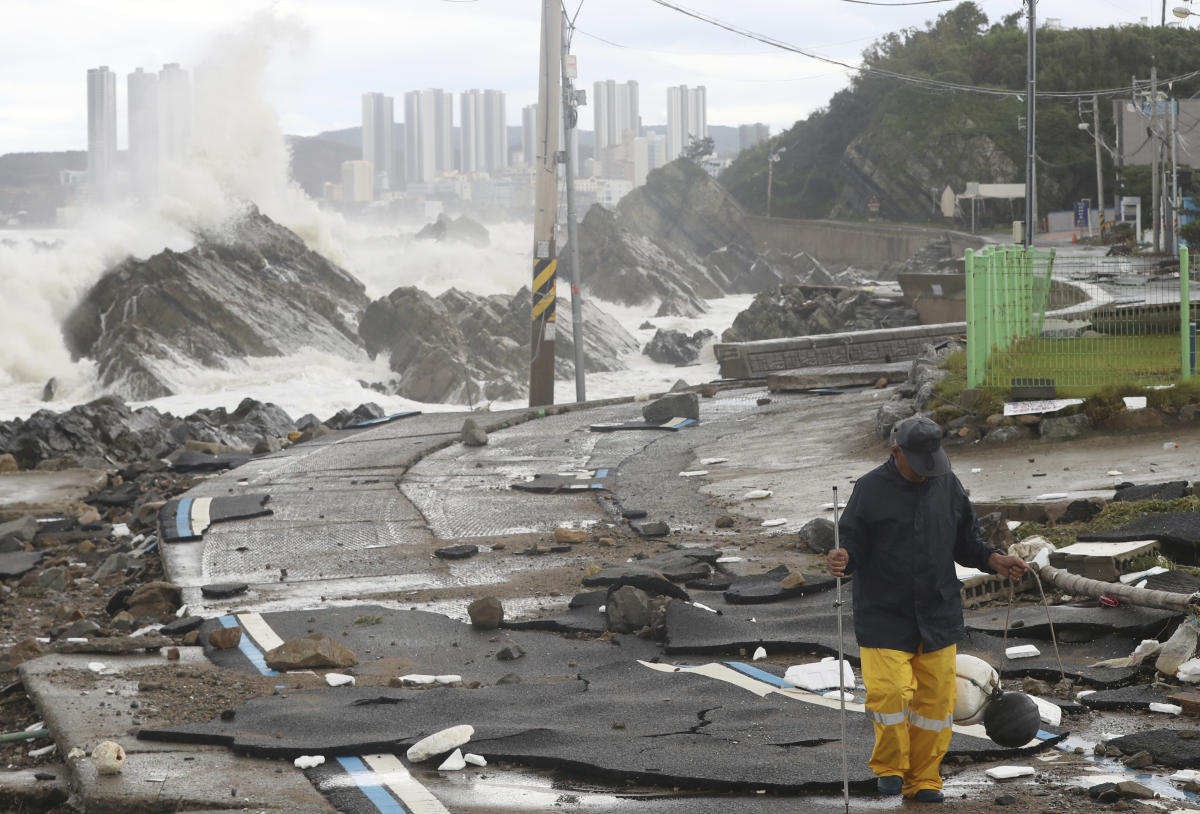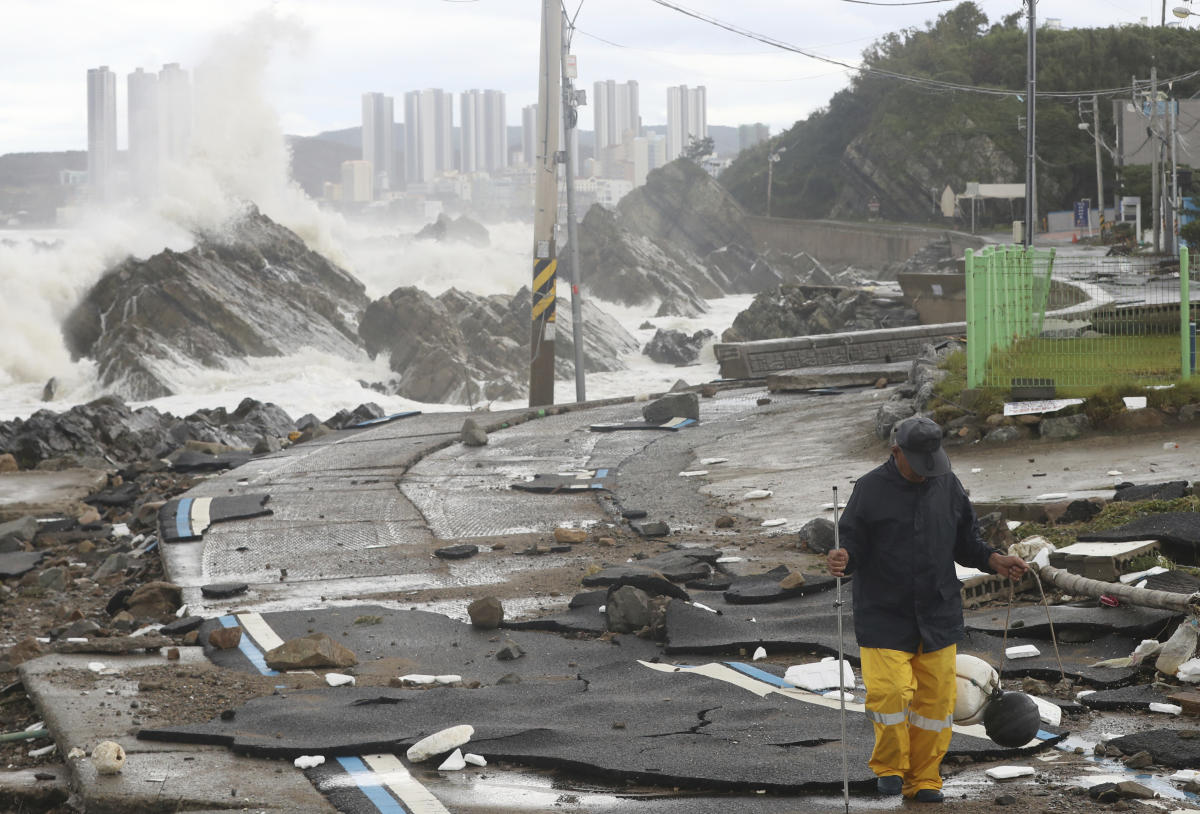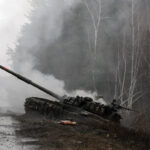
SEOUL, South Korea (AP) — The most powerful typhoon to hit South Korea in years battered its southern region Tuesday, dumping a meter (3 feet) of rain, destroying roads and felling power lines, leaving 66,000 homes without electricity as thousands of people fled to safer ground.
Typhoon Hinnamnor grazed the resort island of Jeju and hit the mainland near the port city of Busan before blowing into the sea between the Korean Peninsula and Japan with winds of up to 133 kilometers (82 miles) per hour. It was moving northeast on a track to affect eastern China later in the week.
South Korean officials put the nation on alert about potential damages from flooding, landslides and tidal waves unleashed by Hinnamnor just weeks after heavy rains in the region around the capital Seoul caused flooding that killed at least 14 people.
Prime Minister Han Duk-soo called for evacuations in areas vulnerable to flooding, saying Hinnamnor could end up being a “historically strong typhoon that we never experienced before.”
The storm dumped more than 105 centimeters (41 inches) of rain in central Jeju since Sunday, where winds peaked at 155 kph (96 mph). Southern and eastern mainland regions were also lashed with heavy rain, which knocked off signboards and roofing, toppled trees and electricity poles and turned roads into chocolate-colored rivers.
A woman in her 70s died in the southern city of Pohang after being swept away in flash floods, while two other people were missing, including a 25-year-old man who fell into a rain-swollen stream in the nearby city of Ulsan, according to the Ministry of the Interior and Safety.
Fires were reported at a major steel plant operated by POSCO in Pohang, but it wasn’t immediately clear whether they were caused by the storm.
The Safety Ministry said about 500 among 3,400 people who had been forced to evacuate returned home as of Tuesday afternoon. At least five homes and buildings were flooded or destroyed, and scores of roads were damaged.
More than 600 schools were closed or converted to online classes. More than 250 flights and 70 ferry services were grounded while more than 66,000 fishing boats evacuated to ports. Workers by late morning had managed to restore electricity to 30,006 of the 66,341 households that lost power.
A South Korean presidential official, who spoke on condition of anonymity during a background briefing, said officials were investigating the cause of the fires at POSCO’s Pohang plant, where firefighters were working to extinguish flames that damaged at least three facilities at the complex.
Lim Yoon-sook, an official from the North Gyeongsang province fire department, said the flames destroyed a building housing electricity equipment and were continuing to burn through a separate office building, although workers were close to extinguishing a smaller fire at a cokes factory.
In North Korea, state media reported “all-out efforts” to minimize damage from flooding and landslides. The Korean Central News Agency reported leader Kim Jong Un during government meetings had issued unspecified “detailed tasks” to improve the country’s disaster response capacity but it didn’t elaborate on the plans.
North Korea sustained serious damage from heavy rains and floods in 2020 that destroyed buildings, roads and crops, shocking the country’s already-crippled economy.




